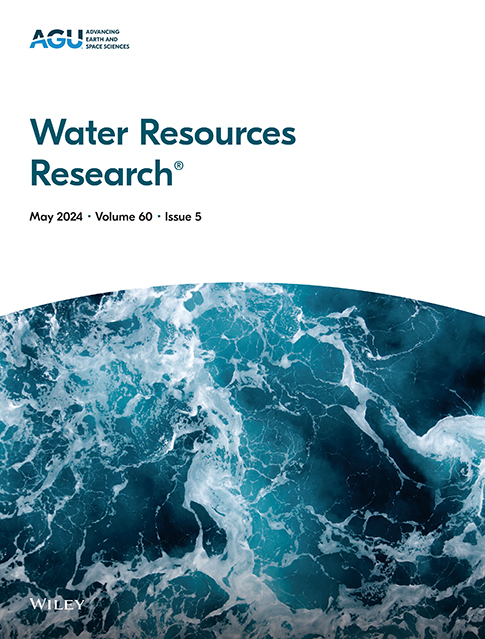Simulation of Spring Discharge Using Deep Learning, Considering the Spatiotemporal Variability of Precipitation
IF 5
1区 地球科学
Q2 ENVIRONMENTAL SCIENCES
引用次数: 0
Abstract
Sparse precipitation data in karst catchments challenge hydrologic models to accurately capture the spatial and temporal relationships between precipitation and karst spring discharge, hindering robust predictions. This study addresses this issue by employing a coupled deep learning model that integrates a variation autoencoder (VAE) for augmenting precipitation and a long short-term memory (LSTM) network for karst spring discharge prediction. The VAE contributes by generating synthetic precipitation data through an encoding-decoding process. This process generalizes the observed precipitation data by deriving joint latent distributions with improved preservation of temporal and spatial correlations of the data. The combined VAE-generated precipitation and observation data are used to train and test the LSTM to predict spring discharge. Applied to the Niangziguan spring catchment in northern China, the average performance of NSE, root mean square error, mean absolute error, mean absolute percentage error, and log NSE of our coupled VAE/LSTM model reached 0.93, 0.26, 0.15, 1.8, and 0.92, respectively, yielding 145%, 52%, 63%, 70% and 149% higher than an LSTM model using only observations. We also explored temporal and spatial correlations in the observed data and the impact of different ratios of VAE-generated precipitation data to actual data on model performances. This study also evaluated the effectiveness of VAE-augmented data on various deep-learning models and compared VAE with other data augmentation techniques. We demonstrate that the VAE offers a novel approach to address data scarcity and uncertainty, improving learning generalization and predictive capability of various hydrological models. However, we recognize that innovations to address hydrologic problems at different scales remain to be explored.考虑降水时空变异性的深度学习春季流量模拟
喀斯特流域稀疏的降水数据对水文模型准确捕捉降水与喀斯特泉流量之间的时空关系提出了挑战,阻碍了可靠的预测。本研究通过采用耦合深度学习模型解决了这一问题,该模型集成了用于增加降水的变化自编码器(VAE)和用于岩溶泉流量预测的长短期记忆(LSTM)网络。VAE通过编解码过程生成综合降水数据。该过程通过导出联合潜在分布来推广观测降水数据,并改进了数据的时空相关性保存。利用vae生成的降水和观测数据相结合的方法对LSTM进行训练和测试,以预测春季流量。结果表明,该模型的NSE、均方根误差、平均绝对误差、平均绝对百分比误差和对数NSE的平均性能分别达到0.93、0.26、0.15、1.8和0.92,分别比LSTM模型高145%、52%、63%、70%和149%。我们还探讨了观测数据的时空相关性,以及vae生成的降水数据与实际数据的不同比例对模式性能的影响。本研究还评估了VAE增强数据在各种深度学习模型上的有效性,并将VAE与其他数据增强技术进行了比较。我们证明了VAE提供了一种解决数据稀缺性和不确定性的新方法,提高了各种水文模型的学习泛化和预测能力。然而,我们认识到,解决不同尺度水文问题的创新仍有待探索。
本文章由计算机程序翻译,如有差异,请以英文原文为准。
求助全文
约1分钟内获得全文
求助全文
来源期刊

Water Resources Research
环境科学-湖沼学
CiteScore
8.80
自引率
13.00%
发文量
599
审稿时长
3.5 months
期刊介绍:
Water Resources Research (WRR) is an interdisciplinary journal that focuses on hydrology and water resources. It publishes original research in the natural and social sciences of water. It emphasizes the role of water in the Earth system, including physical, chemical, biological, and ecological processes in water resources research and management, including social, policy, and public health implications. It encompasses observational, experimental, theoretical, analytical, numerical, and data-driven approaches that advance the science of water and its management. Submissions are evaluated for their novelty, accuracy, significance, and broader implications of the findings.
 求助内容:
求助内容: 应助结果提醒方式:
应助结果提醒方式:


